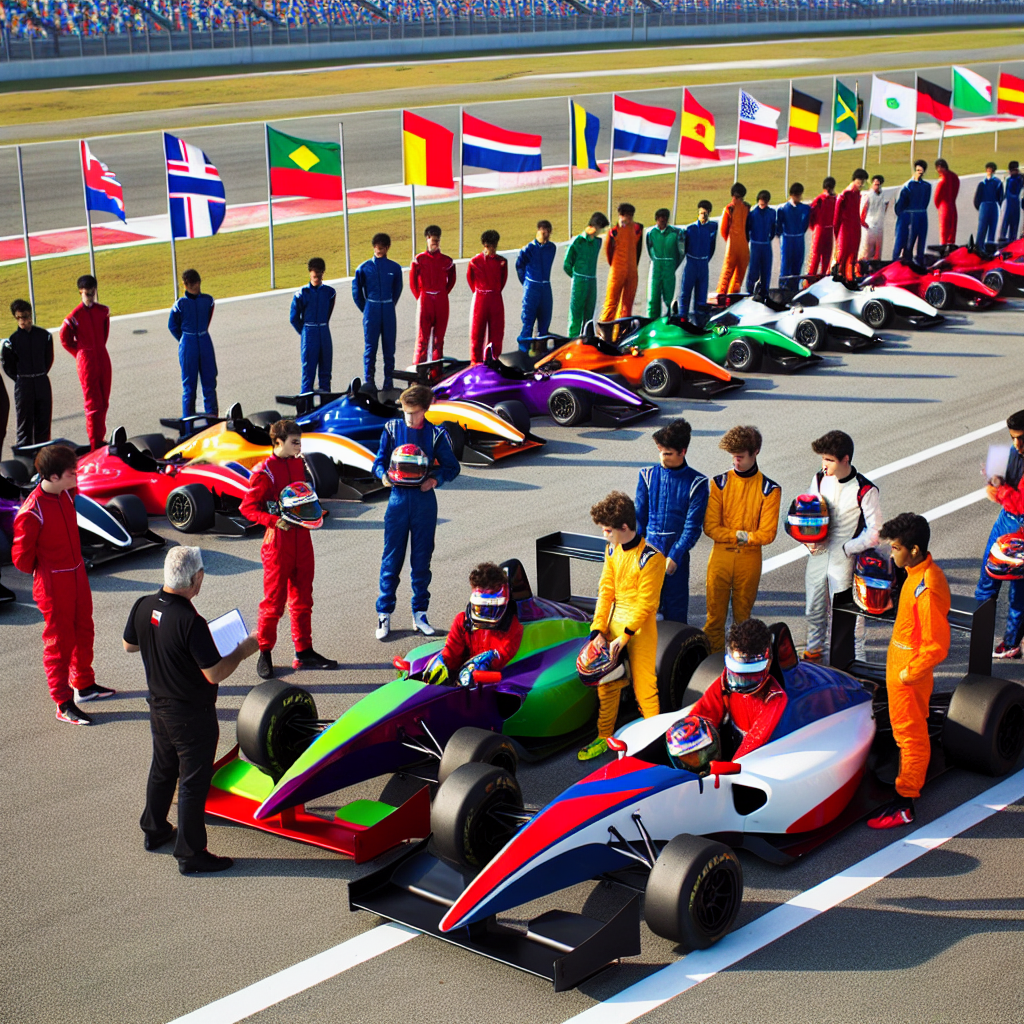Formula 1 Junior Training Programs: Inside Elite Racing Academies
The Path to Racing Greatness
For families with the means and ambition to nurture a young motorsport prodigy, Formula 1 (F1) junior training programs provide the ultimate gateway into the high-octane world of professional racing. These elite academies are designed to refine raw talent, develop mental resilience, and assist young drivers in climbing the ranks from karting to the pinnacle of motorsports—Formula 1.
Many of today’s racing superstars, including Max Verstappen, Charles Leclerc, and George Russell, honed their skills through such junior programs before making their F1 debuts. These academies not only provide world-class physical training but also focus on the psychological, strategic, and technical aspects that define world champions.
For affluent families seeking the best path for their child in motorsports, these programs represent more than a driving school; they are a comprehensive, long-term investment in a future where meticulously trained athletes thrive under enormous pressure. With affiliations to major F1 teams like Ferrari, Red Bull, and Mercedes, these academies offer young drivers access to elite coaching, state-of-the-art simulators, and an introduction to the rigorous competitive landscape of motorsport.
Luxury parenting isn’t just about providing the best education or exclusive experiences—it’s about curating opportunities that will set children apart. Enrolling in an F1 junior academy means tapping into a structured pathway designed to create racing champions, complete with expert guidance on fitness, media handling, and contract negotiations. Moreover, with technological advancements and data-driven training regimes, these academies ensure that drivers are equipped with every conceivable advantage.
For parents with a passion for motorsports and the resources to support their child’s aspirations, understanding how these elite programs operate, what they require, and what unique benefits they provide can be transformational. The following sections explore the intricate world of F1 junior academies, highlighting the science behind elite driver training, and offering insight into the future of this high-performance sport.
The Science Behind Elite F1 Training
Developing young drivers into F1-ready athletes requires a blend of physical conditioning, cognitive training, and endurance management. Research in sports science and neuroscience has contributed significantly to how junior academies train their athletes, incorporating data analytics and specialized psychological techniques.
Neurological and Cognitive Training: Sharpening Reflexes for Racing
Studies have shown that elite drivers possess superior cognitive abilities, particularly in reaction time, decision-making, and concentration. A study published in *Frontiers in Human Neuroscience* found that professional racing drivers process visual information significantly faster than non-athletes, giving them a competitive edge in high-speed decision-making scenarios.
Because milliseconds can determine the outcome of an F1 race, programs utilize technology such as neurofeedback training, reaction tests, and even virtual reality simulations to enhance a driver’s split-second decision-making abilities. These methods improve their ability to respond to high-speed environmental changes while maintaining razor-sharp focus under stress.
Physical and Endurance Training: Pushing the Limits
Racing requires extreme physical fitness, despite the common misconception that drivers simply sit in a car. Drivers experience G-forces exceeding 5G during braking and high-speed cornering, placing immense strain on the neck and core muscles. Research from the *Journal of Sports Sciences* emphasizes that F1 drivers have significantly better neck strength, cardiovascular fitness, and muscular endurance than the average athlete.
Junior academies emphasize specialized resistance training, cardiovascular workouts, and simulated cockpit training to enhance physical resilience. Programs incorporate activities such as neck harness training, isometric core workouts, and high-intensity endurance exercises to prepare young talents for the physical rigors of professional racing.
Psychological and Mental Conditioning: Thriving Under Pressure
The pressure in motorsports is immense. A study published in *Psychology of Sport and Exercise* highlights the importance of stress tolerance and mental resilience in elite athletes. Junior academies integrate mindfulness practices, meditation, and cognitive behavioral training to strengthen a driver’s mental fortitude, especially in high-stakes environments.
Sports psychologists work closely with these young athletes to enhance their focus, manage pressure, and optimize their performance under race conditions. Overcoming performance anxiety, mastering race-day strategies, and optimizing cognitive load management are crucial areas of training in F1 development programs.
Conclusion: The Road to Formula 1 Success
Formula 1 junior academies offer a structured, scientifically-driven approach to nurturing future champions. These elite training programs go beyond traditional racing schools by integrating cutting-edge neuroscience, physical conditioning, and psychological endurance strategies to cultivate well-rounded drivers.
For parents of means who wish to invest in their child’s motorsport aspirations, these academies provide the expertise, facilities, and exposure necessary for a potential future in Formula 1. Racing at a professional level is not just about talent—it is about meticulous preparation, discipline, and world-class training. For those who dream of seeing their child on the F1 grid, elite academies offer an unparalleled path to motorsport excellence.
Summary:
Formula 1 junior training programs provide a structured, scientifically-driven approach to nurturing future racing champions. These elite academies focus on refining raw talent, developing mental resilience, and assisting young drivers in climbing the ranks from karting to the pinnacle of motorsports – Formula 1. By integrating cutting-edge neuroscience, physical conditioning, and psychological endurance strategies, these programs offer parents of means the expertise, facilities, and exposure necessary for their child’s potential future in Formula 1.

Dominic E. is a passionate filmmaker navigating the exciting intersection of art and science. By day, he delves into the complexities of the human body as a full-time medical writer, meticulously translating intricate medical concepts into accessible and engaging narratives. By night, he explores the boundless realm of cinematic storytelling, crafting narratives that evoke emotion and challenge perspectives. Film Student and Full-time Medical Writer for ContentVendor.com




